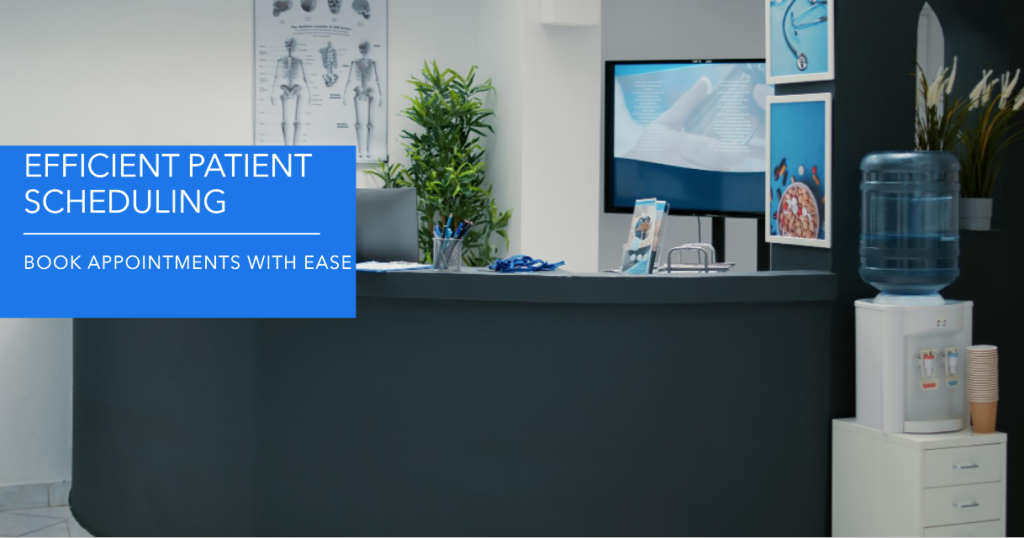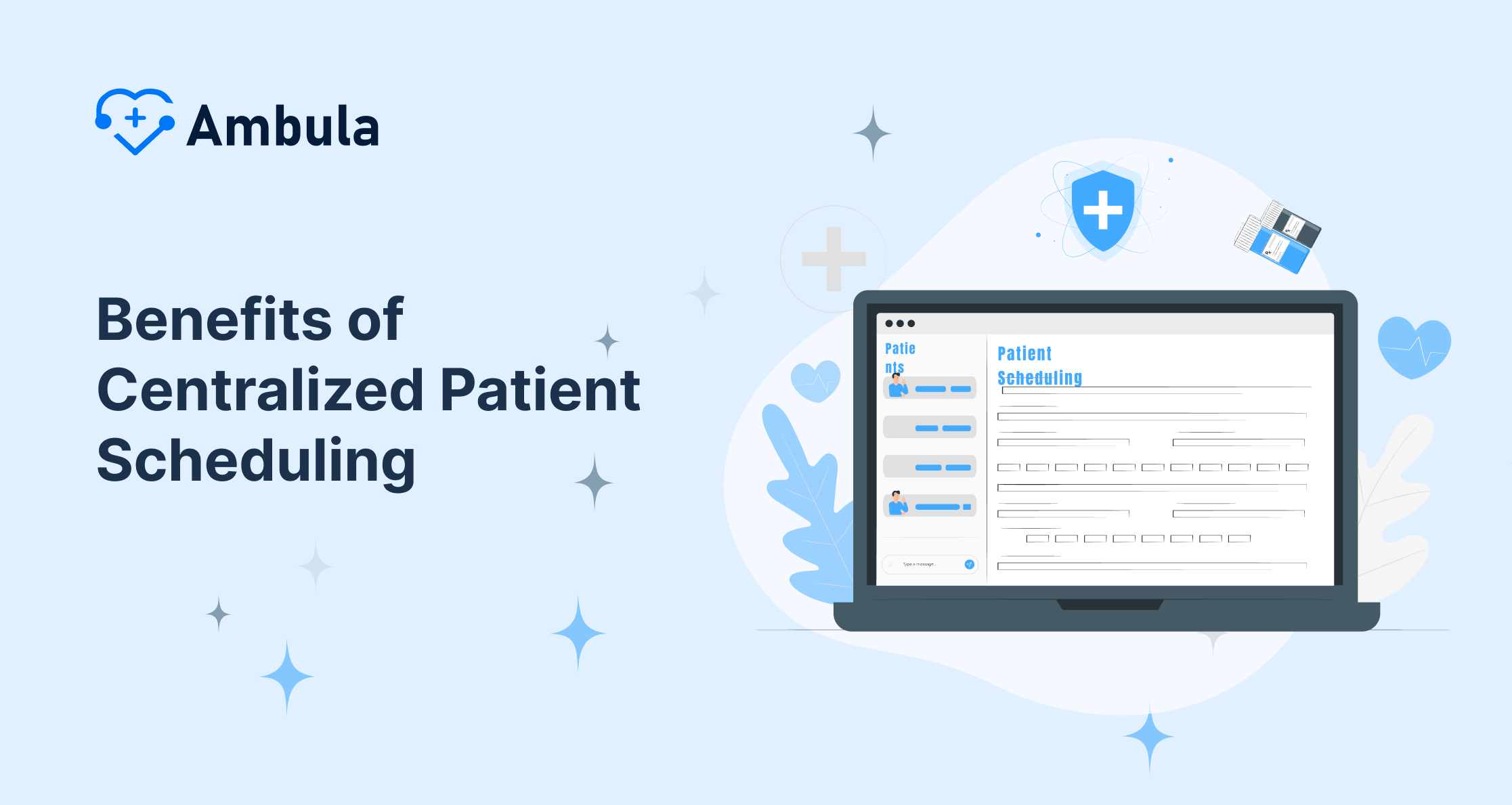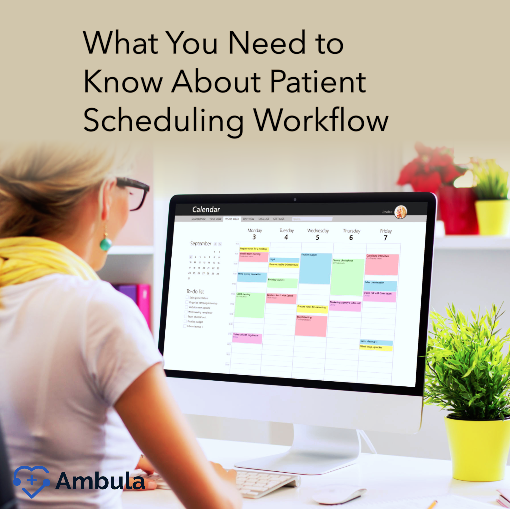
Patient scheduling in a busy medical office can be difficult, requiring careful planning, organization, and communication between all involved parties. To ensure patients receive the best care possible, following best practices for Patient scheduling is essential. This article will discuss the critical elements of successful patient scheduling in a busy medical office and provide helpful tips to make the process easier.
Table of content
- The Benefits of Patient Scheduling
- Utilize a Patient Scheduling System
- Dealing with Cancellations and No-Shows
- Managing Staff Resources for Better Patient Flow
- The Role of Technology in Improving Patient Scheduling
- Preserving Patient Privacy and Data Security
- Mastering the Balancing Act
The Benefits of Patient Scheduling
Patient scheduling can be time-consuming and challenging for medical offices, but it is essential for providing quality care. Proper patient scheduling can help reduce wait times, ensure patients are seen on time and provide a better overall experience for patients and staff. In addition, it can help to track patient information, improve cost efficiency, and improve staff morale.
The Basics of Patient Scheduling
Patient scheduling involves various tasks, including appointment scheduling, patient flow management, and tracking patient information. It is essential to have a well-defined process in place to ensure that all of these tasks are completed efficiently and effectively.
Utilize a Patient Scheduling System
A Patient scheduling system can make it much easier to schedule patients. This system allows you to quickly and easily view available appointment times, schedule new appointments, and manage patient information. Patient scheduling systems also often include features such as automated appointment reminders, which can help to reduce no-shows.
- Keep Appointment Times Consistent: Consistency is vital regarding patient scheduling. By keeping appointment times consistent, patients will know when to expect their appointment and will be less likely to miss it. Additionally, this can make it easier for patients to plan for their work and for the medical office staff to plan their day.
- Use a Waitlist A waitlist: A waitlist can effectively manage Patient scheduling in a busy medical office. When an appointment is canceled, the next Patient on the waitlist can be notified and offered the open appointment time. This helps fill empty appointment slots and ensures patients are seen promptly.
- Allow for Flexibility: While consistency is important, it is also essential to allow for Flexibility. Some patients may require longer appointments, while others may need to schedule an appointment at an unusual time. Being flexible and accommodating with the situation can help ensure that all patients are seen on time.
- Communicate with Patients: Effective communication with patients is critical regarding Patient scheduling. By keeping patients informed of appointment availability, wait times, and any changes to their schedule, you can help reduce confusion and ensure that patients are seen on time.
- Schedule Follow-Up Appointments: Scheduling follow-up appointments can help ensure patients receive the necessary care. By scheduling these appointments in advance, you can help ensure that patients are seen on time and that any required follow-up care is provided.
- Consider Patient’s Needs When scheduling appointments, it is essential to consider the Patient’s needs. For example, if a patient has a chronic condition, you may want to schedule a longer appointment to allow for more in-depth care. Additionally, if a patient is experiencing a medical crisis, you may need to schedule an appointment to provide the necessary care as soon as possible.
- Monitor and Analyze Your Scheduling Data: Monitoring and analyzing your scheduling data can help you to identify patterns and trends. This can help you to identify any problems with Patient scheduling, such as long wait times or a high number of no-shows, and take steps to address them.
- Be Prepared for Emergencies: Emergencies can happen anytime, and it’s essential to be prepared for them. This may include having a plan for handling emergencies, such as adding additional appointment slots or having a staff member on call to take urgent appointments.
Dealing with Cancellations and No-Shows
Cancellations and no-shows can disrupt the patient scheduling process in any medical office. As part of physician scheduling best practices, it’s essential to have a system to manage them efficiently. You can minimize the effects of cancellations and no-shows by reminding patients about their appointments through text messages or emails. A cancellation policy can also be beneficial, with potential penalties for habitual no-shows. Implementing these strategies can improve how patient scheduling is managed in your office.
Optimally Managing Staff Resources for Better Patient Flow in the Medical Office
Managing staff resources effectively is pivotal for maintaining good patient flow in the medical office. Every staff member must be conversant with the best practices of scheduling patients and their role. Regular staff meetings can facilitate effective communication and ensure everyone is on the same page. Equipping all staff members with different patient scheduling skills can help to manage patient appointments more efficiently and effectively, even during staff shortages.
The Role of Technology in Improving Patient Scheduling
Incorporating technology into the patient scheduling process can greatly enhance its efficiency and patient experience. Features like digital appointment reminders can reduce no-shows, and an online appointment system can relieve the front-office staff, making managing patient appointments easier. Moreover, introducing telemedicine into your practice provides more flexibility to patients who may find physically visiting the office challenging. Therefore, integrating technology into scheduling patients is a significant step toward improving your medical office’s responsiveness and adaptability.
Preserving Patient Privacy and Data Security in Scheduling
When focusing on how patient scheduling can be improved, it’s essential to prioritize patient privacy and data security. Your scheduling system should align with all legal requirements regarding data protection, and staff should handle patient data carefully. Regular checks and audits can help ensure your system is robust and secure, thereby building trust between patients and your medical office.
Mastering the Balancing Act: Overbooking and Underbooking
Patient flow in the medical office is significantly influenced by how well you manage overlapping patient appointment gaps. Overbooking and underbooking require careful consideration. Overbooking can result in long wait times, and underbooking can lead to inefficient use of resources. Regular evaluation of patient trends can help strategize your overbooking and underbooking thresholds. Each medical office should adopt its unique practices, mindful of its patient trends and specific needs.
Conclusion
Patient scheduling in a busy medical office can be a challenging task. However, following best practices and utilizing the right tools can help to make the process simpler and more efficient. Medical offices can ensure that patients receive the best care possible by establishing clear protocols, updating Patient records, utilizing technology, monitoring schedules, and communicating clearly.





